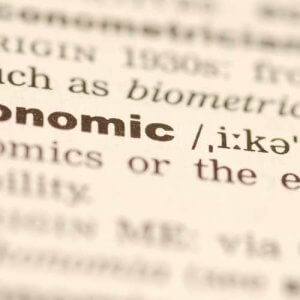Every teacher dreams of becoming the darling of his/her students and often wonders how others do it. I am sharing my mantra here for success which worked with 100% results.
Every new academic year brings apprehensions, anxiety and happiness in the minds of both teachers and students. No other profession has this flavour of looking forward to a new experience every year. The hushed staff room discussions and worried messages of parents in their secret WhatsApp groups, mount up until the first day of new academic session when the suspense is finally over. So, she is the new class teacher!
Know your Real ‘Subjects’
Jiddu Krishnamurti was invited to speak in a conference where he asked the teachers to introduce themselves.
“I teach Maths/I teach English/I teach Social Science,etc.”
After hearing this, J. Krishnamurty turned back to leave, much to the surprise of the organisers. On being asked why he was leaving, he said, “Well, I thought they are teachers who teach STUDENTS… but they teach subjects.” This sums up our attitude towards teaching.
We are so obedient to the syllabus (designed by us) that we forget our first subject that is sitting in front of us- ‘CHILD!
Isn’t it our first duty to KNOW our child?

Here I suggest a plan for first three classes at the beginning of the session which will not only help you KNOW your most important subject, your child, but will also go a long way in cementing the bond between you and your class.
DAY 1 – Introduction
Activity 1 – Setting the Tone
Instead of just asking their names, which in any case you can’t remember in one day, try the following on the first day-
Announce to the class that you have got the best section in this standard. You can use a positive adjective for your section which begins with the same alphabet. Class VI could be Awesome, Boisterous, Caring, Dashing, Excellent or Fantastic.
“Welcome students, we are VII-D and you know This D is for DYNAMIC.”
Procure the class list from the previous class teacher a day before, and work out how many names begin with the same letter. Begin with statements like:
“We are going to be the ‘Most dynamic section’ this year! Because we have 7 Amazing students in our class, may I request the 7 Amazing students to stand up and wave to all.”
They would look quite confused as they would have no idea what you are talking about. Now is the time to begin your list:
“Amazing Aarush”
“Amazing Arnav”
“Amazing Adwaita”
You will be delighted to see the victorious smile on each face. There will be stifled laughter too when you call out a particular name because the fellow has already earned a different reputation but you can cover it up with your wit.
“Well, Amazing Anurag has a different plan this year and he is going to surprise you all. Isn’t it so Anurag dear? Come on! Give me a high five!”
Next when you announce: “4 Charismatic students!”
Charvi, Chetna and Chirag and Chehel who will quickly jump up to take the salute and wave a royal Hi to the class. 2 Dashing students, Danish and Dheemahi will spring up joy fully.
You are winning them over one by one in your first class itself. Follow the method and talk about Elating Ekanshes, Fantabulous Faizals, Gorgeous Gitas and so on.
More importantly, you are conveying clearly that though you have the list from the previous class teacher, you have not carried forward her estimation of them, in your mind. One little homework will set the stage and your approach for the year. They will wait for your next class. Remember the fine lesson of psychology we value those who value us.
Activity 2 – Strike a Pose
Try this one on the first day by asking them that on the count of 5 they will have to strike 5 poses and should stand like a statue.
Each pose should be unique and the only condition is that one part of the body should touch their chair. Then you start counting very dramatically. The moment you would have said ‘one’ you would find children standing in very interesting pose at this point of time. You can ask them to roll their eyes around and see how their friends are standing. It will be very amusing to see them striking new poses and will make the class fun filled as they would discover the creativity of their own classmates.
Day 2 – KYC
All the banks and financial institutions make us fill a document called KYC- Know Your Customer. Devote your second day to your KYC- Know Your Child.
How to do it?
The biggest mistake we commit is asking the student what his/her problems are- in front of the whole class. Do we like to open up about our problems in front of everyone? If you want the child to open up try this KYC.
Ask all the children to take out a sheet of paper from their rough note book. Tell them that as it is a yearlong association with them, and you are deeply interested in knowing them properly and genuinely. Hence, they can help you by writing their thoughts in detail (and in any language) so that their answers help you ‘know’ them, their strengths, their weaknesses and areas where they need your help.
The one condition being, their answers should be honest and truthful. They need to just write the answer to the questions you would be calling out.
Here are the questions I have been using and I keep modifying them according to the age group-
- Your name.
- Write 2-3 lines about your parents, their occupation and their nature.
- Who are you closer to and why?
- What are your strengths/good qualities?
- What are your talents?
- Which values do you like most and follow?
- What is/are your weaknesses?
- Would you like me to help you overcome these?
- Have you been bullied in school? If yes, can you share. If no, do you bully others?
- Is there any problem in the class that you want me to solve? Write in detail.
Kids will be delighted to find a person who considers them a human being and not just a roll number.
Third day – Class Contract
You would have given them instructions to bring a particular book/workbook. Utilize this day to create a Class Contract.
How to do it?
Divide your class in three groups. Arrange the tables in a horse shoe or semicircular so that students can debate, discuss and pen down their thoughts in all the seriousness of making a contract.
The first group, you announce, will list the Do’s that the class will follow. The second group will list out the Don’ts and the third one will think of creative tasks that will be assigned to those who break the contract. Be sure not to use the word ‘punishment.’
The only condition, you will impose is – all discussions to be in softer tones and each one will contribute to the process of drafting. All you need to do is take rounds and assist them in framing sentences. Once the task is done, pass on the list to the next group till each group has gone through every list.
During the exercise you can complement them on the brilliance of their work. Once done, paste these three sheets on a chart and ask everyone to sign, including you.
This is a Contract- all are accountable, and what’s more, they have framed their own limitations. You will marvel at the ideas they come up with and anytime you observe any child breaking the rule, you just need to show him/her the Contract and her/his signatures.
Real Learning for Teachers
Children love to be loved and cared for. Every effort made by the teacher in this regard, will pave the road for your success of being an educator of great merit.
These three classes will prove to be a million-dollar investment for you as a teacher. Being a true educator, you would take up the problems shared by the students in their KYC letter. You could borrow substitution periods to do these activities with your students. However, the real reward will be connecting with your students.
We are sure you would have loved this article by our ‘Encouraging Educator’ Sunita Rajiv. Do let us know what did you think about this article.
Read another super article by Sunita here Parent-Teacher Partnership in the 21st century to create well-rounded individuals











